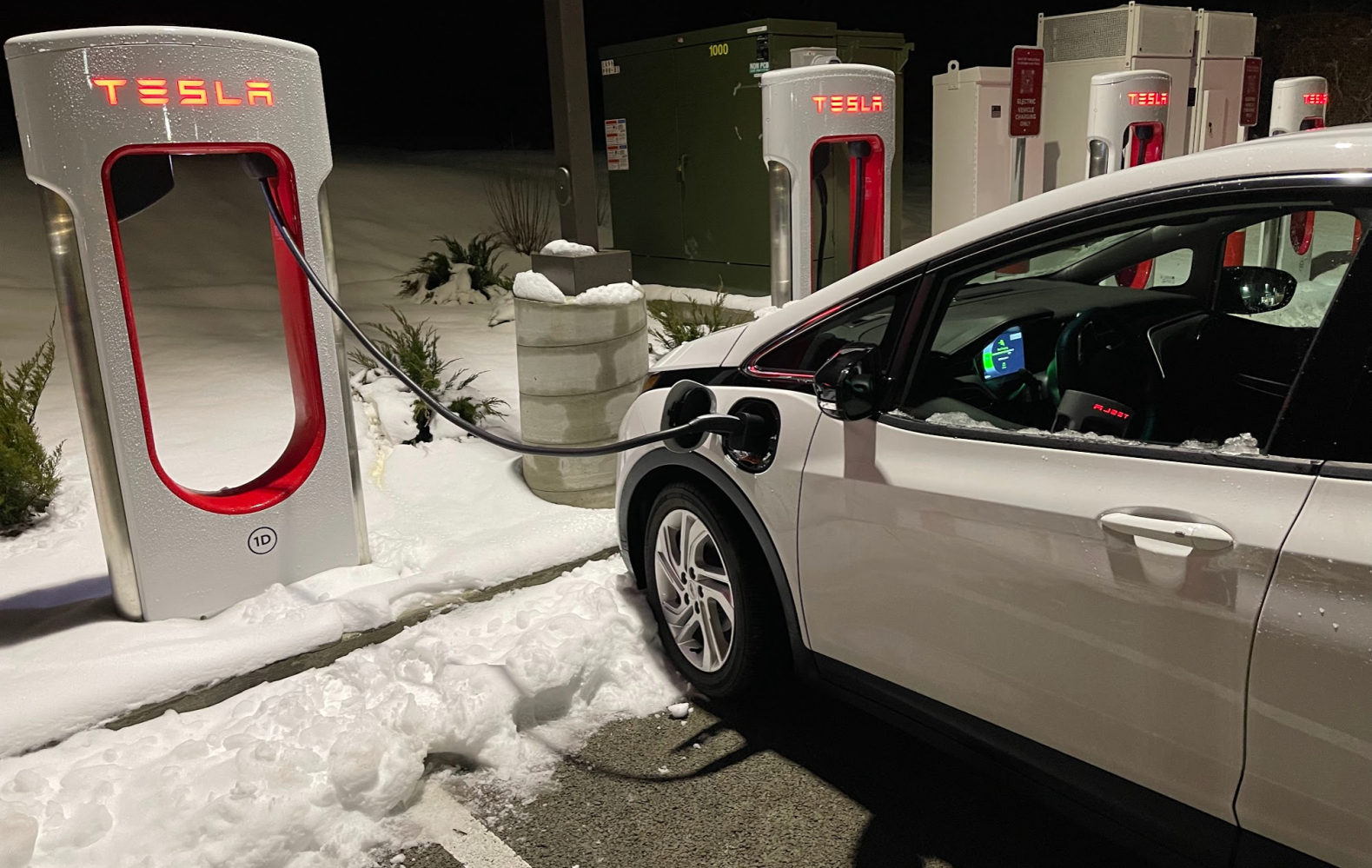
Universal Plug & Charge – the ability for any EV to just plug in and start charging without having to open an app, swipe a card or press any buttons first – will be ready in 2025 and promises to make EV charging much easier, thanks to an effort between the Society of Automotive Engineers, the auto industry, and the Biden Admin’s Joint Office of Energy & Transportation.
In the ideal case, one of the best parts of EV ownership is the fact that it’s such a convenient, easy experience. Just charge your car at home most nights, and the few times you need to charge on the road, stop at a DC fast charger, plug in (without having to swipe a credit card or anything) when you have lunch or otherwise need a break, and continue on whenever you’re ready.
But, outside of Tesla Superchargers and the much smaller Rivian Adventure Network, on-the-road EV charging can be an inconsistent experience in the US. While other networks exist and plenty of drivers use them every day, they typically have lower reliability and can be confusing or frustrating to initiate charge sessions at.
Many EV drivers can tell you about exasperated moments they’ve experienced, or witnessed others experience. Lots of us have had to coach a new owner through the charging process – or struggled with it ourselves when setting up a new charging app for the fifteenth f$%*ing time.
It would be a lot better if you could just walk up, plug in, and charge. And do this anywhere.
This idea isn’t new – Tesla’s system already works like this, but it can do so since it’s vertically integrated and one company controls the whole process. For public chargers that have to serve several different types of cars, the back end hasn’t been available to allow this sort of charging.
The problem is the lack of a Public Key Infrastructure (PKI) back-end to authenticate vehicles and payments. Public keys are a cryptographic mechanism that allow for secure authentication – one example is website certificates, so your computer can know that it is looking at a legitimate website.
In Europe, this PKI is provided by a company called Hubject, which verifies charging sessions on European public chargers. But in the US, nobody had coalesced around a single company or organization to provide these certificate services yet.
A solution has been in the works for a few years now, and it’s finally just about ready to go, in the form of what’s colloquially referred to as “Universal Plug & Charge,” and technically referred to as the ISO 15118 standard.
Today, a consortium of companies, the SAE, and the Biden Administration’s Joint Office of Energy and Transportation announced that Universal Plug & Charge will come in 2025.
The technical details involve a PKI back-end that isn’t provided by a single company, but utilizes a standardized process to allow various companies to provide this service.
In practical terms, it means faster starts to charging sessions as the communication process is streamlined, better security, and potential future capabilities like bidirectional charging.
Top comment by Locke
When you think about it, this will be far superior to even ICE and gas stations. We cannot simply drive up to any gas station, fill the tank, and drive away. Many people have separate Apps for loyalty/discounts/etc.
Good stuff - great job to all involved.
And it means that other EVs that support Plug & Charge will finally have a Tesla-like charging experience, where they can just plug in and start charging – with payment taken care of on the back end, instead of having to swipe cards or open new apps.
The Joint Office says that PKI suppliers can start applying to offer back-end services, and that “throughout 2025, the industry will continue to move toward the universal Plug & Charge model.”
So… like many things have been with EVs, it sounds like there will still be a gradual process of adoption, but the light at the end of the tunnel is finally visible, and it looks like EV fast-charging is going to get a lot simpler in the near future.
Charge your electric vehicle at home using rooftop solar panels. Find a reliable and competitively priced solar installer near you on EnergySage, for free. They have pre-vetted installers competing for your business, ensuring high-quality solutions and 20-30% savings. It’s free, with no sales calls until you choose an installer. Compare personalized solar quotes online and receive guidance from unbiased Energy Advisers. Get started here. – ad*
FTC: We use income earning auto affiliate links. More.





Comments